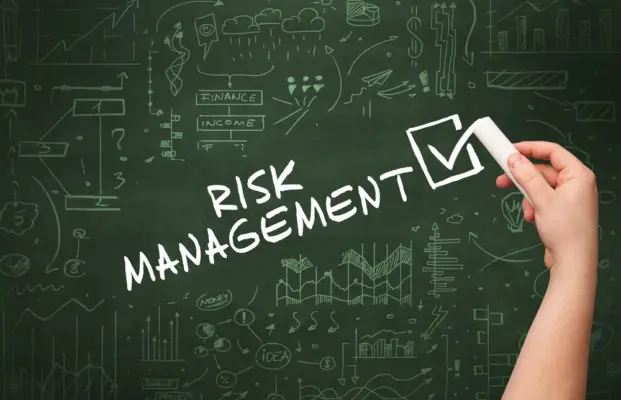In the intricate world of risk management, having a robust set of questions and answers is more than a convenience; it’s a necessity.
Whether you’re a seasoned professional in the field or a newcomer seeking to grasp the essentials, the “Risk Assessment Questions and Answers PDF” is designed to guide you through the multifaceted landscape of risk analysis and control.
This comprehensive resource covers the theoretical foundations and offers practical insights and real-world examples to sharpen your understanding.
This blog post will provide an overview of the contents and the value this PDF can bring to your professional development or organizational risk management strategy.
Join us as we explore an indispensable tool that can elevate your proficiency in risk assessment, fostering informed decision-making in an ever-changing and uncertain business environment.
Risk assessment is a critical process in various fields, including healthcare, finance, and environmental management.
This article aims to provide a comprehensive overview of risk assessment questions and answers, focusing on a downloadable PDF resource.
By exploring different types of risk assessment questions and the steps involved in answering them, readers will gain a deeper understanding of this essential practice.

Definition of Risk Assessment
The purpose of a Risk Assessment Questions and Answers PDF is to provide a comprehensive and structured approach for identifying, evaluating, and systematically mitigating risks.
This document serves as a tool to enable organizations to assess potential hazards, vulnerabilities, and potential impacts of various risks.
Suicide Risk Assessment Questions: Understanding the gravity of mental health issues requires delicate yet incisive questions, especially when assessing suicide risks.
These questions are more than a diagnostic tool; they form a lifeline that could save someone’s life. Professionals trained in mental health must develop a nuanced approach, asking the right questions to identify hidden dangers and provide the essential support that may be critically needed.
Question for Risk Managers: The role of risk managers is multifaceted, involving intricate decision-making processes. Questions aimed at risk managers often probe their ability to identify, evaluate, and mitigate risks in various organizational contexts.
Whether understanding complex financial instruments or creating strategies to handle operational uncertainties, the questions they face require a blend of technical know-how and strategic insight.
Risk Assessment Interview Questions: Landing the perfect candidate for risk assessment roles means asking questions that unearth knowledge and the ability to apply it.
Risk assessment interview questions often explore scenarios that test analytical skills, ethical considerations, and real-world problem-solving.
How would you handle an unexpected market downturn? What methods would you use to evaluate a particular risk? These questions provide a glimpse into the candidate’s readiness for the role.
Risk Officer Interview Questions: In interviews with prospective Risk Officers, employers seek to uncover a candidate’s ability to protect the organization from potential threats.
The questions often extend beyond theoretical knowledge, delving into experiences managing regulatory compliance, handling unexpected crises, and building a risk-aware culture within a company.
Career in Risk Management: A career in risk management is both challenging and rewarding, attracting those with a keen analytical mind and a taste for solving complex problems.
The field offers diverse opportunities, from financial risk analysis to operational risk control, and requires continuous learning and adaptation to the ever-changing landscape of global business threats and opportunities.
Ecological Risk Assessment: Ecological risk assessment is more than just a study; it’s a pledge to our environment. Evaluating the potential adverse effects of human activities on ecosystems, guides decisions that harmonize development with sustainability.
From preserving biodiversity to ensuring that our resources are utilized responsibly, ecological risk assessment is crucial to our commitment to the planet.
Risk Management Interview Questions: An interview for a risk management position doesn’t just examine what you know but how you apply it.
Questions may range from understanding the methods used to identify and prioritize risks to exploring how one communicates those risks to different stakeholders.
It’s about showcasing the ability to balance the technical Aspects of Risk with the human elements that make risk management a vital organizational function.
Aspects of Risk: Risk is not one-dimensional. It includes various aspects, from market risks affecting investment portfolios to operational risks impacting daily business functions.
Understanding the different facets of risk is essential to managing them effectively. Whether assessing potential losses or planning strategies to mitigate them, every risk aspect requires careful consideration and management.
Categories of Risks: From financial to strategic, operational to compliance, the categories of risks are as diverse as the business world itself.
Each category demands a specialized approach for identification, assessment, and mitigation.
Recognizing these categories helps organizations tailor their risk management processes, ensuring that no potential pitfall goes unnoticed.
Common Risk Analyst Interview: The common risk analyst interview explores quantitative and qualitative skills.
From understanding mathematical models that forecast market trends to assessing how cultural factors might influence business operations, the questions probe the breadth and depth of a candidate’s ability to analyze risks.
Feature in Risk Manager: A Risk Manager’s feature set is a blend of sharp analytical skills, a strong understanding of business operations, and an ability to communicate complex ideas simply.
They navigate the uncertain terrains of market dynamics, regulatory environments, and human behaviors to ensure that the organization’s goals are met without unnecessary exposure to risk.
Inherent risk refers to the natural level of risk present in an activity without considering any controls or measures to mitigate it.
From launching a new product to entering a new market, inherent risk is the raw, unfiltered potential for loss. Understanding it is the first step towards managing every business’s risks.
Issues of Risk Management: The challenges and issues of risk management are manifold, encompassing everything from rapidly changing regulatory landscapes to the unpredictability of human behavior.
Managing risk is not a static process but a dynamic one that requires constant adaptation and vigilance, understanding the nuances of the industry, market, and even societal changes.
Micro-Risk: While macro-risks like market fluctuations or regulatory changes might grab headlines, micro-risks such as employee satisfaction or supplier reliability can be equally impactful.
These small-scale risks might seem insignificant, but they can collectively influence an organization’s performance and must be managed with equal attention.
Operational Risk Interview Questions: Interviewing for a role focused on operational risk requires a deep dive into a candidate’s ability to evaluate and mitigate risks associated with daily business activities.
Questions might explore their experience with process improvements, compliance with regulations, or managing third-party relationships.
How they’ve handled specific scenarios can give insight into their capability to protect an organization from internal and external threats.
Cost of Prevention: Investing in prevention is a strategic decision that weighs the potential losses against the cost of measures taken to avoid those losses.
Whether it’s implementing safety protocols in a factory or securing data in a tech firm, the cost of prevention must be seen as an investment in the stability and longevity of the business.
Eye to Cost: In risk management, keeping an eye on costs is vital. Balancing the need for robust risk mitigation strategies with budgetary constraints requires a keen sense of priority and understanding where and how resources are best allocated.
It’s a dance between security and efficiency that demands a nuanced approach.
Additive Approach: In risk assessment, the additive approach involves summing up individual risks to gain an overall risk profile.
It’s a method that can simplify complex scenarios but also demands an understanding that risks do not always behave independently. Recognizing the limits and advantages of this approach is key to its effective application.
Moments-Based Approach: A moments-based approach in risk management focuses on statistical measures such as mean, variance, skewness, and kurtosis.
This method provides a more nuanced understanding of the distribution of risks, helping professionals to gauge potential outcomes not just by their likelihood but by the nature of their impact.
Bad Decision: The impact of a bad decision in risk management can be far-reaching. It might result from a lack of information, poor judgment, or failure to foresee the consequences.
Whatever the cause, a bad decision can be a learning opportunity to reflect, reassess, and rebuild strategies with a greater awareness of what went wrong.
Difficult Times: Navigating difficult times, whether caused by economic downturns, natural disasters, or internal crises, is the true test of risk management.
These moments demand resilience, agility, and an ability to see beyond the immediate chaos. The strategies forged in difficult times often define an organization’s character and set the stage for future success.
Finances Over Time: Managing finances over time is a continuous balancing act, weighing short-term needs against long-term goals. It’s about understanding how risks today can shape opportunities tomorrow
Purpose of Risk Assessment Questions and Answers PDF
The Risk Assessment Questions and Answers PDF provides a comprehensive and standardized tool for evaluating and mitigating potential risks systematically and objectively.
The Risk Assessment Questions and Answers PDF is crucial in risk assessment. This document provides a structured framework for identifying, analyzing, and managing risks in various contexts.
The PDF format allows for easy dissemination and accessibility, ensuring the information is readily available to stakeholders involved in the risk assessment process.
By incorporating specific keywords relevant to the topic, this resource enables individuals to navigate the document and locate the most relevant sections efficiently.
Furthermore, including answers to frequently asked questions enhances the understanding of risk assessment concepts and methodologies.
Overall, the Risk Assessment Questions and Answers PDF promotes effective risk management practices and facilitates informed decision-making processes.
- Provides a comprehensive and standardized tool for evaluating and mitigating potential risks.
- Enables easy dissemination and accessibility.
- Incorporates keywords for efficient navigation.
- Includes answers to frequently asked questions for enhanced understanding.
Types of Risk Assessment Questions
This discussion will focus on different types of risk assessment questions.
Scope risk questions evaluate the potential risks associated with the project’s objectives, deliverables, and scope.
Financial risk questions assess the potential financial impacts and uncertainties that may arise during the project implementation.
Business risk questions address the potential risks and uncertainties related to the organization’s overall business operations and strategy.
Qualitative risk analysis questions involve evaluating risks based on their likelihood and impact using subjective judgments and expert opinions.
Lastly, oil industry risks questions specifically pertaining to the potential risks and uncertainties associated with the oil and gas industry.
Scope Risk Questions
Scope risk questions must be carefully considered and addressed to assess and manage potential risks in a project effectively.
These questions are crucial in understanding the specific risks associated with the project’s scope and identifying appropriate risk management strategies. When formulating scope risk questions, it is important to consider the following:
- Risks related to project scope: Identify potential risks that may arise due to the project’s scope, such as changes in requirements or scope creep.
- Time and resource impacts: Assess the potential time and resource implications arising from scope-related risks, including delays and increased costs.
- Threats to project objectives: Evaluate the impact of scope risks on achieving project objectives, such as meeting deadlines or delivering desired outcomes.
- Equipment and industry-specific risks: Consider any industry-specific or equipment-related risks associated with the project’s scope and incorporate them into risk identification and management plans.
Financial Risk Questions
Financial risk questions are essential when evaluating and managing potential financial risks in a project. These questions are crucial in risk management and help effectively identify, assess, and address financial risks.
Conducting a risk assessment interview using appropriate risk analyst interview questions can provide valuable insights into the financial risks associated with a project.
Furthermore, maintaining a comprehensive risk register that includes qualitative risk analysis and quantitative risk assessment can aid in understanding the inherent and extrinsic risks involved.
Financial risk assessment involves identifying and evaluating risks impacting the project’s financial performance and implementing appropriate mitigation strategies. By addressing financial risks proactively, organizations can enhance their decision-making processes and ensure the project’s overall success.
| Financial Risk Questions | Purpose | Example |
|---|---|---|
| Implement a risk management process | Identify financial risks | Poor market conditions leading to low sales |
| How will these risks impact the project’s financial performance? | Assess the impact of risks | Increased costs and decreased profitability |
| What measures can be taken to mitigate these risks? | Develop risk mitigation strategies | Diversifying revenue streams |
| How will the project’s financial risk be monitored and managed over time? | Implement risk management process | Regular review of financial statements and risk assessments |
Business Risk Questions
Business risk factors should be carefully examined and evaluated to ensure effective risk management in a project. Organizations can develop strategies to mitigate potential risks and make informed decisions by identifying and analyzing these factors. Here are four key questions to consider when assessing business risks:
- What are the potential hazards or errors that could occur during the project? Understanding the risks involved allows for implementing proactive measures to minimize their impact on the project’s success.
- How does the project’s risk profile align with the organization’s risk management processes? Evaluating the project’s risk profile helps identify gaps or areas requiring additional attention in risk mitigation.
- What is the cost associated with managing and mitigating these risks? Assessing the financial implications of various risk management approaches enables organizations to allocate resources effectively.
- How does the project impact the safety and health of employees and stakeholders? Considering the potential risks to individuals involved ensures appropriate measures are taken to prioritize their well-being.
Qualitative Risk Analysis Questions
Qualitative risk analysis involves evaluating the potential impact and likelihood of identified risks to determine their significance and prioritize them for further analysis. Understanding the biggest risks and having the appropriate risk assessment tools is crucial in a risk management position.
To effectively assess risks, risk managers may consider using a risk breakdown structure to categorize and analyze potential risks.
When interviewing candidates for a risk officer position, asking questions about their experience with risk management and their knowledge of risk factors is important. Some potential questions for risk managers could include the following:
- How do you prioritize risks in your risk management process?
- What are the major risks you have encountered in your previous roles?
Oil Industry Risks Questions
The oil industry is known for its high-risk nature, requiring effective risk assessment and management strategies. Risk managers in this industry must consider various factors when assessing the probability of risks occurring.
Some key questions that can guide risk assessment in the oil industry are:
- What is the potential impact of environmental risks on the industry’s operations and reputation?
- How does the industry’s performance and profitability depend on fluctuations in oil prices and market demand?
- What communication channels are in place to ensure effective information sharing and coordination among stakeholders?
- What knowledge and skills are necessary for managing the common risks faced by the oil industry, such as the risk of failure in drilling operations or the risk of fraud in financial transactions?
Common Risks Questions
One important aspect to consider when addressing common risks in the oil industry is the potential impact of environmental risks on the industry’s operations and reputation.
To effectively manage and mitigate these risks, it is crucial to have a comprehensive understanding of the various factors involved.
This includes conducting risk management interviews with key stakeholders and utilizing risk assessment questions that cover a range of areas, such as operational risks, financial impacts, and safety issues.
Additionally, it is important to address the potential health effects of exposure to oil-related activities, including mental health conditions and the potential for human error.

Level of Risk Questions
To evaluate the level of risk in the oil industry, it is important to analyze various aspects, such as potential hazards, vulnerabilities, and impacts on different stakeholders.
This assessment can be done through a comprehensive business risk assessment, which involves identifying and categorizing different types of risks.
The level of risk can be determined by considering the scope of risk, including the range of potential hazards and vulnerabilities present in the industry.
Operational risks, such as accidents or equipment failures, may have a high-risk impact on the oil industry. Reputational risks, such as negative public perception or environmental concerns, can also significantly impact the industry.
The potential impacts on different stakeholders and the financial costs of these risks should also be considered. By incorporating these factors into enterprise risk management, a more accurate assessment of the level of risk in the oil industry can be achieved.
Potential Risks Questions
Potential risks in the oil industry can be evaluated by considering hazards, vulnerabilities, and impacts on stakeholders, which can be assessed through a comprehensive business risk assessment.
One key aspect to consider is the rate at which these risks may occur, which can help determine the urgency and level of preparedness required.
Remembering the fear and uncertainty that can arise from potential risks is important, as this can impact decision-making and planning processes. Additionally, the risk of theft should be considered, as it can put the business at risk financially and damage its reputation.
Market risks, such as changes in oil prices or demand, should also be considered, as they can significantly impact profitability.
A real risk in the oil industry is the potential for ecological damage, which can result in legal consequences and reputational damage.
Steps for Answering Risk Assessment Questions
This focuses on the steps involved in answering risk assessment questions. Specifically, it addresses the key points of identifying the type of question asked, assessing the probability of occurrence of each identified risk factor, and establishing a systematic methodology to evaluate each.
To effectively answer risk assessment questions, it is crucial first to determine the type of question being asked. This step is important because it will guide the subsequent steps in the risk assessment process.
Once the type of question is identified, the next step involves evaluating the probability of occurrence for each identified risk factor. This step helps in understanding the potential impact of the risk and allows for a more accurate assessment of the overall risk.
Finally, a systematic methodology should be established to evaluate each identified risk factor. This step ensures a comprehensive and structured approach to risk assessment, allowing for a thorough analysis of each factor and its potential impact.
Identifying the Type of Question Asked
One method of identifying the type of question asked in a risk assessment is by analyzing the specific language used.
This can provide insight into the underlying intent and focus of the question. When examining the language of risk assessment questions, several aspects should be considered:
1) Keywords: Pay attention to specific terms or phrases that indicate the nature of the risk being assessed, such as ‘risk of suicide’ or ‘high-risk risk.’
2) Tone: Assess the attitude toward risk management conveyed in the question. Look for indicators of concern, urgency, or the need for control of risks.
3) Context: Consider the broader context within which the question is presented. This includes experience with risk mitigation, the routine of risk managers, and attitudes toward risk management.
4) Comparative language: Look for language that highlights the difference between risk scenarios or the level of risk involved.
Assessing the Probability of Occurrence of Each Identified Risk Factor
An objective analysis of relevant data and statistical models must be conducted to assess the probability of occurrence for each identified risk factor.
This analysis is crucial in determining the average risk associated with different kinds of risks and the associated risk levels.
The meaning of risk breakdown can be understood by examining the potential threats and their impact on people, as well as the low-risk impact.
Protection impact assessments are essential in evaluating the cost of inaction and the potential consequences of not addressing the identified risks.
One useful tool for assessing risk probability is the hazard quotient, which considers the likelihood of a hazard occurring and its potential impact.
Establishing a Systematic Methodology to Evaluate Each Identified Risk Factor
A systematic methodology can be established to evaluate each identified risk factor by employing a structured framework incorporating various risk assessment techniques and considering relevant data and statistical models. This methodology should include the following features in a risk manager:
- Micro-risk assessment: It is important to assess risks at a granular level to identify specific vulnerabilities and potential impacts.
- Reactive approach: The methodology should account for reactive measures to mitigate risks and respond to incidents promptly.
- Comprehensive approach: It should encompass all aspects of the organization, including financial decisions, equipment maintenance, and communication between systems.
- Employee engagement: The methodology should encourage employees to report safety concerns and establish effective communication channels to address them.
Additionally, the methodology should consider external threats and industry standards to evaluate risk factors comprehensively.
Frequently Asked Questions
How Can Risk Assessment Be Incorporated Into Everyday Decision-Making Processes?
Incorporating risk assessment into everyday decision-making processes involves considering potential risks, evaluating their likelihood and potential impact, and implementing strategies to mitigate or manage them effectively.
This systematic approach enhances decision-making by promoting informed and proactive risk management.
What Are Some Common Challenges or Limitations When Conducting Risk Assessments?
Common challenges and limitations in conducting risk assessments include the subjectivity and uncertainty of risk estimation, lack of data or reliable information, difficulties in identifying all potential risks, and the need for expertise and resources to perform comprehensive assessments.
Are There Any Specific Industries or Sectors Where Risk Assessment Is Particularly Important?
In certain industries or sectors, risk assessment is of particular importance. This is due to the nature of their operations, potential hazards, or the potential impact of risks on stakeholders, the environment, or public safety.
How Frequently Should Risk Assessments Be Reviewed and Updated?
The frequency of reviewing and updating risk assessments is an important consideration. It is necessary to regularly assess the changing risk landscape, industry standards, and regulatory requirements to ensure the effectiveness and currency of risk mitigation strategies.
What Are Some Best Practices for Effectively Communicating Risk Assessment Findings to Stakeholders?
Effective communication of risk assessment findings to stakeholders is crucial. Best practices include providing clear and concise summaries, utilizing visual aids, tailoring the message to the audience, and fostering open and transparent dialogue for better understanding and informed decision-making.

Conclusion
Risk assessment is a crucial process in identifying and evaluating potential risks in various domains. This article discussed the definition of risk assessment and the types of questions involved in this process.
By answering these questions, organizations can gain insights into potential risks and develop mitigation strategies. The steps for answering risk assessment questions were also outlined.
Risk assessment plays a vital role in proactive risk management and decision-making.

Chris Ekai is a Risk Management expert with over 10 years of experience in the field. He has a Master’s(MSc) degree in Risk Management from University of Portsmouth and is a CPA and Finance professional. He currently works as a Content Manager at Risk Publishing, writing about Enterprise Risk Management, Business Continuity Management and Project Management.

